Eco-Friendly Acoustics - Creating spaces that are kind to our ears and good to the planet!


Eco-Friendly Acoustics - Creating spaces that are kind to our ears and good to the planet!
A conversation with Nigel Burton, Director of Acoustics at Temple
In our 42nd episode of the Quiet Mark podcast, we welcome Nigel Burton, Director of Acoustics at Temple; leaders in the field of built and natural environments and resting sustainable futures. Temple forms alliances with sustainability experts and clients to make an environmental and social difference together. They’re proud to be an SME and have a reputation for excellence, having worked on some of the UK’s most complex infrastructure and social programmes. Temple brings science and expertise to deliver the best practicable environmental option consistent with sustainable goals and partner with others who share the same commitment to the environment. Collaboration and inclusivity are at the core of their work.
As well as being Temple’s Director of Acoustics, Nigel has been a member of the IOA Institute of the Acoustics since 1997. He has experience of environmental acoustics and is an active member and a board member of the ANC Association of Noise Consultants which means that his interests are right up our street! Temple has worked on HS1 and HS2, the Shard, Crossrail, Northern Line extension and more. “Across the business we are involved in planning, advice, technical services, air quality and consent.”

Temple is proud of showcasing its green credentials but we asked Nigel about how such major projects prevent an effect on nature and local levels of quiet. “We are trying to help those types of projects minimise their environmental impact as much as possible. Some of the work that the noise team did with the ecology team on a project looking at bats on a stretch of the route of HS2. The concern was bats flying across the route. A tunnel was proposed to be put in which was fine for bats flying over but there was a concern about bats flying through the end of the tunnel. Our solution was a couple of acoustic deterrents to be placed either end of the tunnel to stop the bats flying in which was tested in the local bat habitat and showed positive progress. A specific requirement from natural England was that not one bat death could be acceptable”
“This acoustic deterrent was from the US where they are used for wind turbines to minimise bird and bat strikes. It’s essentially a high frequency speaker array which here was placed on either end of the tunnel.”
Last year, in an episode called ‘Sustainable September’, The Quiet Mark Podcast host, Simon Gosling, spoke with a variety of brands inc. AllSfar, BASWA acoustic, and Karndean designflooring UK, who in addition to getting some of their products Quiet Mark certified, to verify their acoustic performance credentials, also used Third Party Certifications, such as the Environmental Product Declaration to show their sustainable manufacturing methods. Simon, asked Nigel whether, when responsibly sourcing acoustic solutions and materials, he used such certifications to help his specifications.
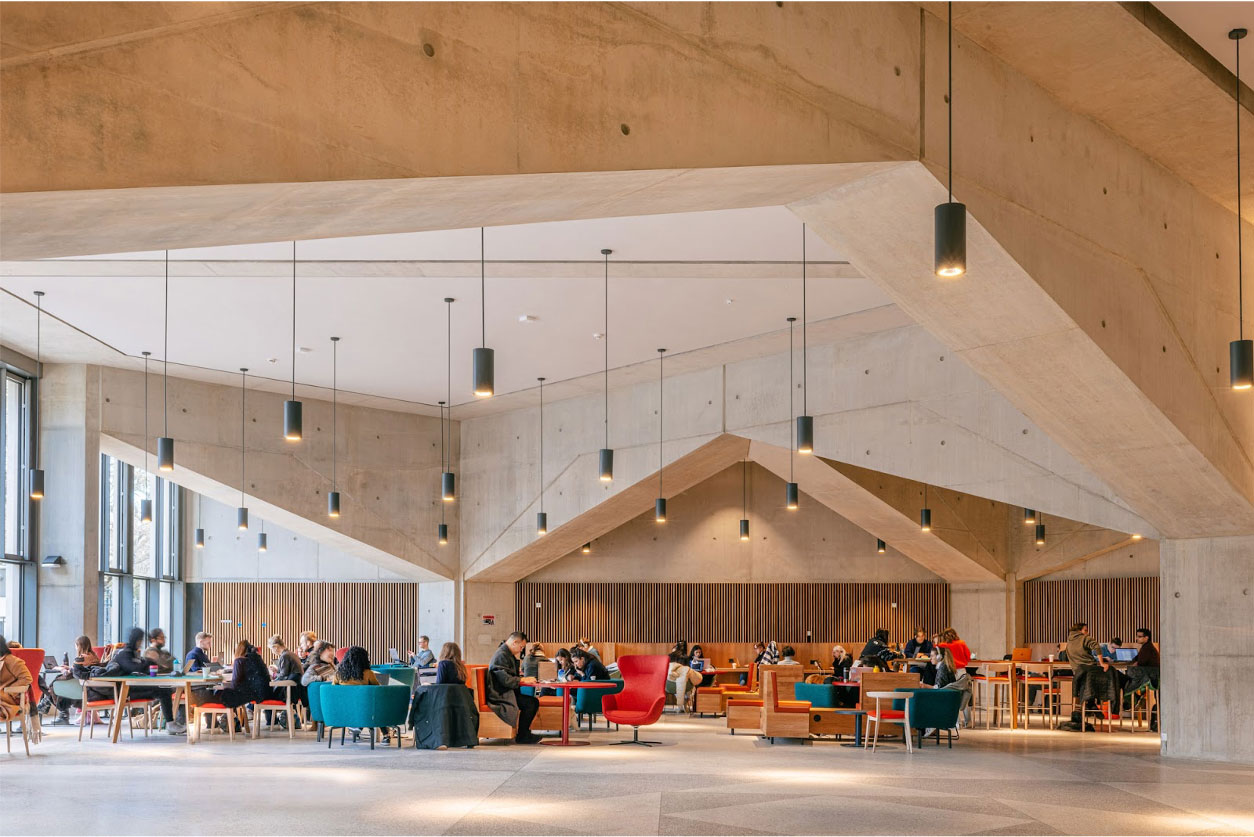
Image: Pritzker Prize winners Grafton Architects chose Quiet Mark certified, sustainably produced BASWA Phon Acoustic Plaster System to control the interior acoustics for the LSE's Marshall Building.
“In terms of sustainable products, I’m seeing a big drive from architects specifically asking for them. For me, it’s not just about how low carbon a product is but also its longevity. Elementa has recently published a noteworthy report about this called ‘WHOLE LIFE CARBON – PIONEERING RESEARCH AT ELEMENTA. If you look at the whole life cycle of refurbishment, it’s much more sustainable to refurbish than build a brand new building. I’m now working on an office base build, the architects were keen to look at alternative ceilings for acoustic absorption. We are coming up with a scheme which offers the tenant to put up acoustic absorption if desired because we don’t want a tenant to remove it.”
We wondered whether Nigel had experienced a prioritising of visual needs through architectural projects he has worked on. Specifically as to whether there is a tug of war between acousticians and architects when it comes to buildings that work well or is it harmonious. “It has certainly changed over time. Projects in the past tended to be more aesthetic-focused which meant I had to change things and upset people who had confirmed decisions without considering acoustics so the earlier we can get involved the better value we can provide.”
“We are certainly very close to seeing more of a trend towards acousticians being brought in earlier. There are very few projects now which leave acoustic referral too late. If you get involved early enough, the acoustic treatment is part of the design so it isn’t trying to fix anything but instead part of the inherent design of the space. If a space doesn’t work acoustically people won’t want to spend time in it and therefore the building hasn’t met the brief.”
From his professional perspective, we asked Nigel how he would describe the difference between environmental, building and architectural acoustics. “I’d lump building and architectural acoustics into one but environmental acoustics could also be anything outside a building such as road traffic or aircraft noise and how that impacts people who are working inside the building.”
Nigel also spoke on the work he does as a board member of an association of noise consultants. “We have over 100 member companies and get involved with writing guides where legislation hasn't been there in the past or isn’t clearly defined. We even look at British standards and write guides on how to interpret them. The association produced the acoustic ventilation and overheating guide in late 2019 which looked at the impact of overheating residential buildings by opening the windows which could affect sleep, probably for the first time in the UK. It’s only really come into play this year which is a great development in the industry.”
On our podcast, we have spoken to guests such as Adam from Hawkins Brown about wellbeing still seeming as a beneficial accessory within projects rather than a necessity (unlike credentials such as sustainability). We asked Nigel’s opinion; “I think the design of offices is going to change massively in a post pandemic world, ones which prioritise collaborative space and private spaces for calls. Nigel Osland, a workplace psychologist, looked at how workers feel about noise in workspaces and a conclusion from his research was that if people found it noisy they’d either work elsewhere or put headphones on which isn;t a sustainable solution. So I can certainly see how acoustics will be more carefully considered in future projects, making offices more welcoming.”
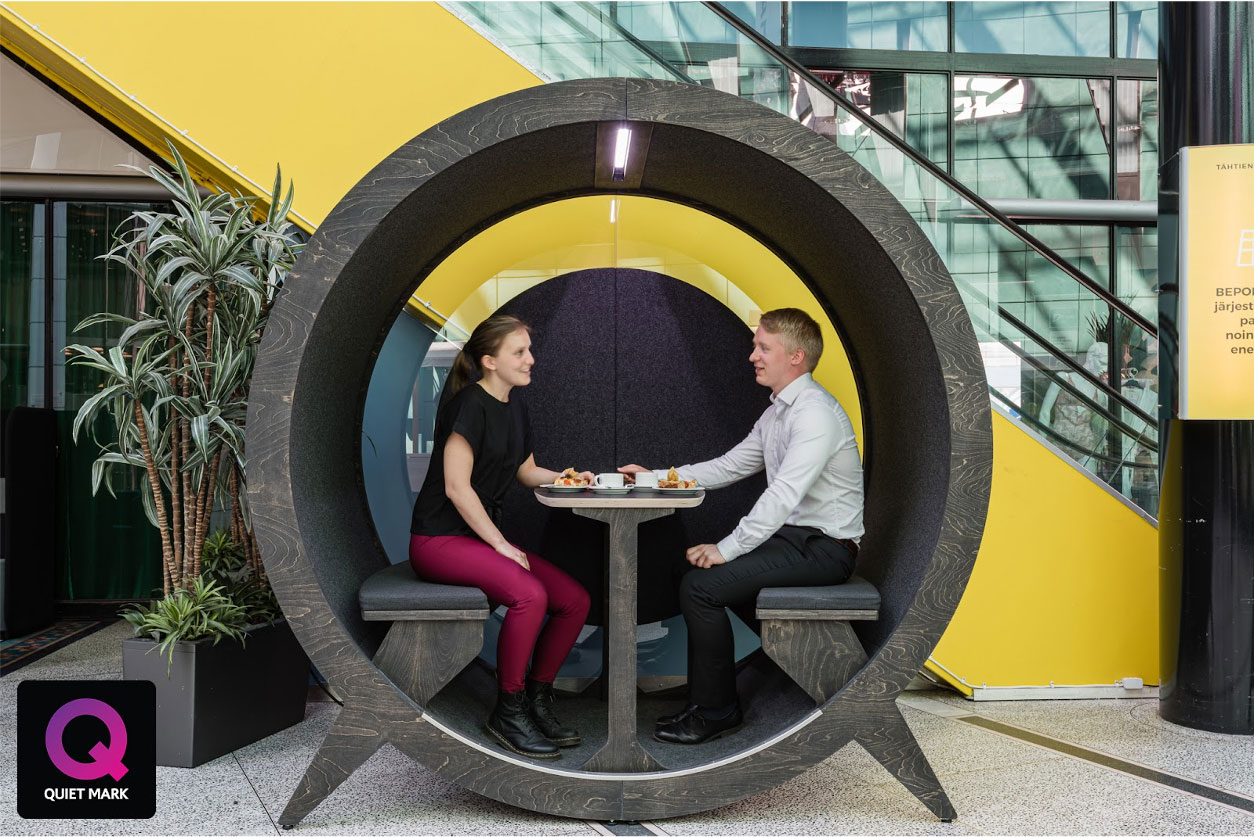
Image: The BlockO Base Acoustic Meeting Pod - one of many Quiet Mark certified products helping to improve workspace acoustics and increase occupant wellbeing and productivity.
The pandemic is said to have accelerated a lot of trends. “I think there'll be a lot more Zoom calls and the silver lining of the pandemic was that we were forced to try new systems and sort out the issues far more than if we had the alternative. More thought about the acoustic treatment within meeting rooms and the systems that are used will need more thought.”
“There are distractions you can definitely pick up such as dog barking in the background, people leaving their mic on and general Zoom etiquette - which we are all still learning! But I’m pleasantly surprised as to how we have gotten used to it so quickly”.
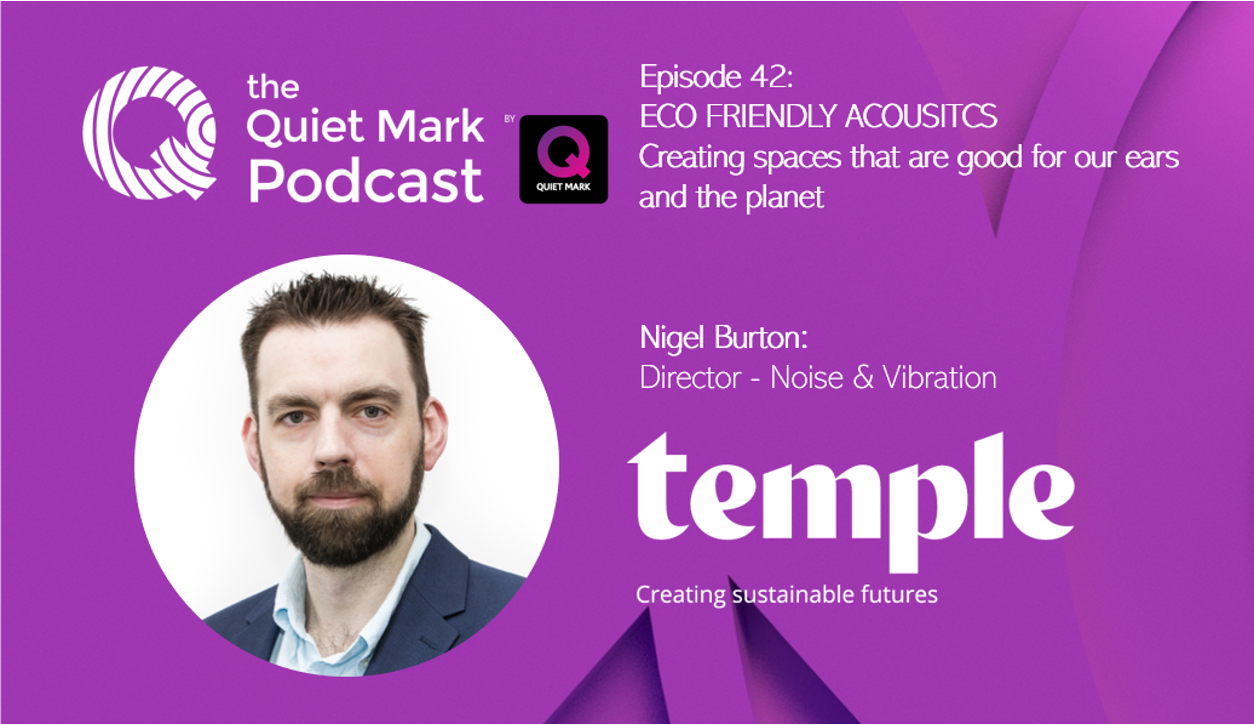
Listen to Nigel Burton on Episode 42 of The Quiet Mark Podcast HERE

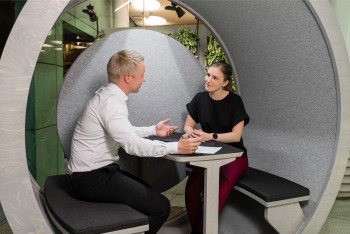

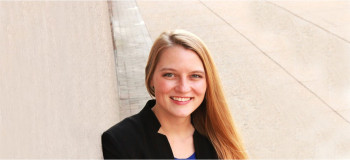




 Quiet Mark Founder
Quiet Mark Founder